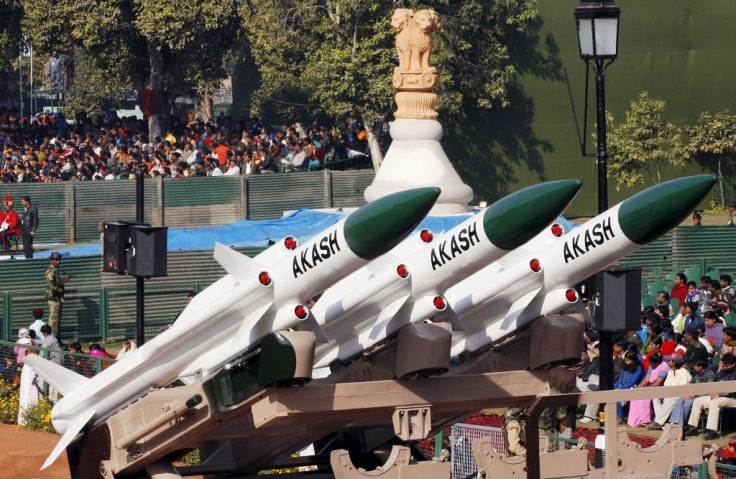War In Asia-Pacific Region? India, Vietnam In Talks Over Akash Missile System Amid South China Sea Tensions, Report Says

India is discussing the supply of its indigenously developed surface-to-air missile system to Vietnam, according to reports Monday.
Vietnam has expressed “deep interest” to purchase the Akash missile system and is seeking for transfer of technology and joint production of the defense system, the Times of India newspaper reported, citing sources. However, India wants an initial off-the-shelf purchase followed by transfer of technology in maintenance and other areas, the report added.
“Talks are in progress to arrive at a common plan. It’s relatively easier on the Akash front since the missile system is 96 percent indigenous,” a source told the daily.
The Akash missile system is a medium-range mobile surface-to-air defense system developed by India’s Defense Research and Development Organization. The system has the ability to attack targets up to 18 miles.
The development comes as both nations try to confront Beijing’s growing assertiveness in the Asia-Pacific region. China is reportedly attempting to increase its dominance in both the Indian Ocean region and the contested South China area.
A satellite image from last May showed a Chinese nuclear submarine docking at the Pakistani city of Karachi, Indian media reported Friday. Authorities in India told the local NDTV news network that Type 093 Shang submarine was likely used to spy on Indian naval activity as part of China’s attempts to show its power in the Indian Ocean region.
In December, tensions in the South China Sea mounted as China’s first aircraft carrier Liaoning sailed through the disputed region to carry out open-sea training drills. The carrier was commissioned by the Chinese navy in 2012 and Beijing said last month the vessel was geared up to engage in combat. The Liaoning was reportedly bought as an incomplete hull from Ukraine over a decade ago.
In 2014, India and Vietnam said that “freedom of navigation and overflight in the East Sea/South China Sea should not be impeded and called the parties concerned to exercise restraint, avoid threats or use of force.”
On Friday, reports said that Vietnam started dredging work on a disputed reef in the South China Sea. The move has been seen as Hanoi’s way to defend its stake to the strategic waterway that has largely been claimed by China.
China has laid claims to almost all of South China Sea, through which about $5 trillion worth of maritime trade passes annually. It has also reportedly been building runways and ports on islands in the contested waters to assert its claim over the region. Beijing has consistently defended its actions, saying it does not intend to start a conflict and that its operations will add to the safety of the region.
© Copyright IBTimes 2025. All rights reserved.






















